Spring is in the air, and so is the desire for fresh attire to match the gaiety of the season. In 1921, spring fashion was a focus for historic Oregon newspapers, which, through pictorials, articles, and advertisements, relayed that year’s haute new looks to dedicated readers.
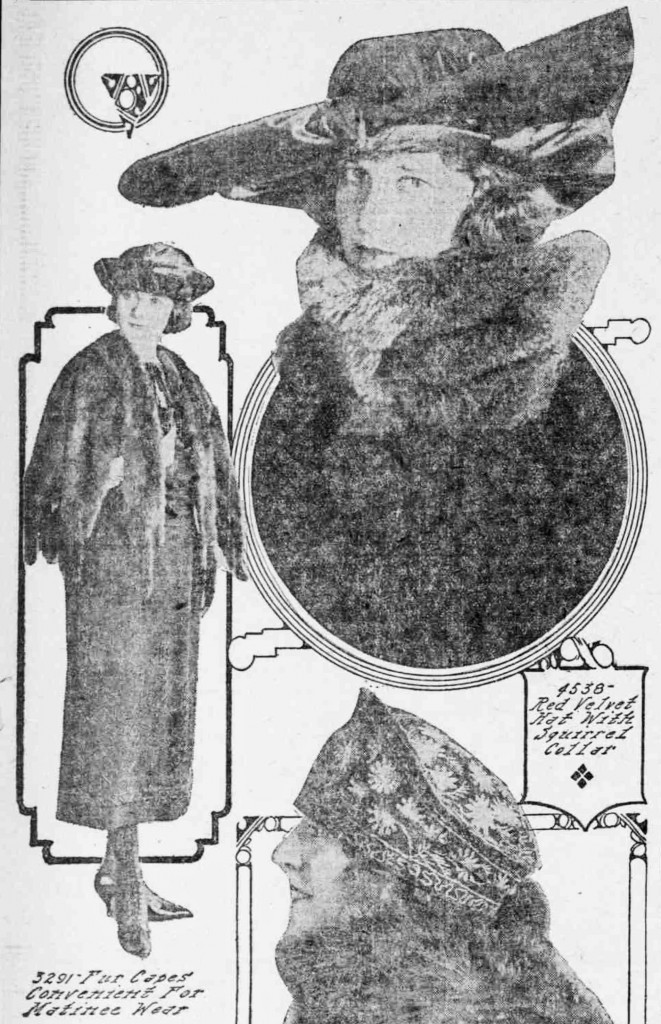
The Sunday Oregonian. (Portland, Ore.) January 16, 1921, Image 64. http://oregonnews.uoregon.edu/lccn/sn83045782/1921-01-16/ed-1/seq-64/
In 1921, historic Oregon newspapers‘ reportage of spring fashion was largely geared toward female readers, with photos featuring women’s clothing, footwear, and accessories such as hats, wraps, and gloves. Fashion reporters of the era looked to Paris, France, for the latest trends. After all, Paris was (and still is) the fashion capital of the world. Typical of the newspaper copy for these spring fashion spreads was what accompanied the above pictorial, published in the January 16, 1921, issue of the Sunday Oregonian: “Nothing is so fashionable as grey just now – the Paris craze for all shades of grey has reached America.” Aside from highlighting the color of the season, the above pictorial focused on “little fur wraps” (“easier to take care of than a bulky coat in a theater seat”), with the furs of choice being “Russian mink” and “smoke grey fox.” Rounding out the look were silk hats, chiffon frocks, silk stockings, and strap slippers.
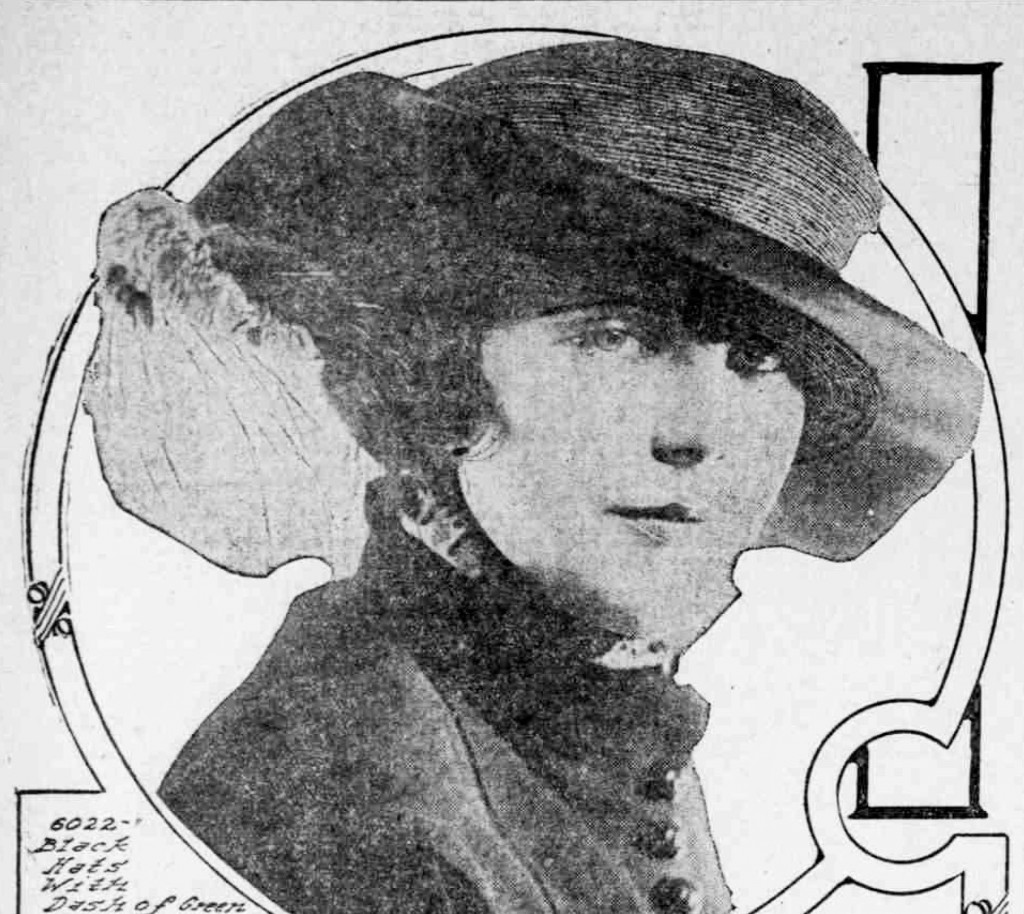
The Sunday Oregonian. (Portland, Ore.) February 20, 1921, Image 66. http://oregonnews.uoregon.edu/lccn/sn83045782/1921-02-20/ed-1/seq-66/
The Sunday Oregonian continued its reportage on fur wraps in a pictorial that ran in the February 20, 1921, issue. In this same fashion feature, an image from which can be seen above, the newspaper went beyond talk of “Paris wraps for spring” and elaborated upon the latest in women’s hats, specifically noting that “nobody needs hatpins in low-setting millinery now in vogue.” (“Hatpins Again Are Being Taken Up as Ornaments, Not Being Essential.”) Among the “low-setting millinery now in vogue” were the “new turban from Lewis – one of the flat, saucer affairs that are so very smart this spring” and the one seen in the image above: “a low-crowned model on fine black milan, with flange brim of black satin and under the brim at the back is tucked a tuft of Erin green ostrich from which stray spiky tendrils of black ostrich. The hat has stunning lines and with the tall-collared spring wrap makes its wearer very smart indeed.”
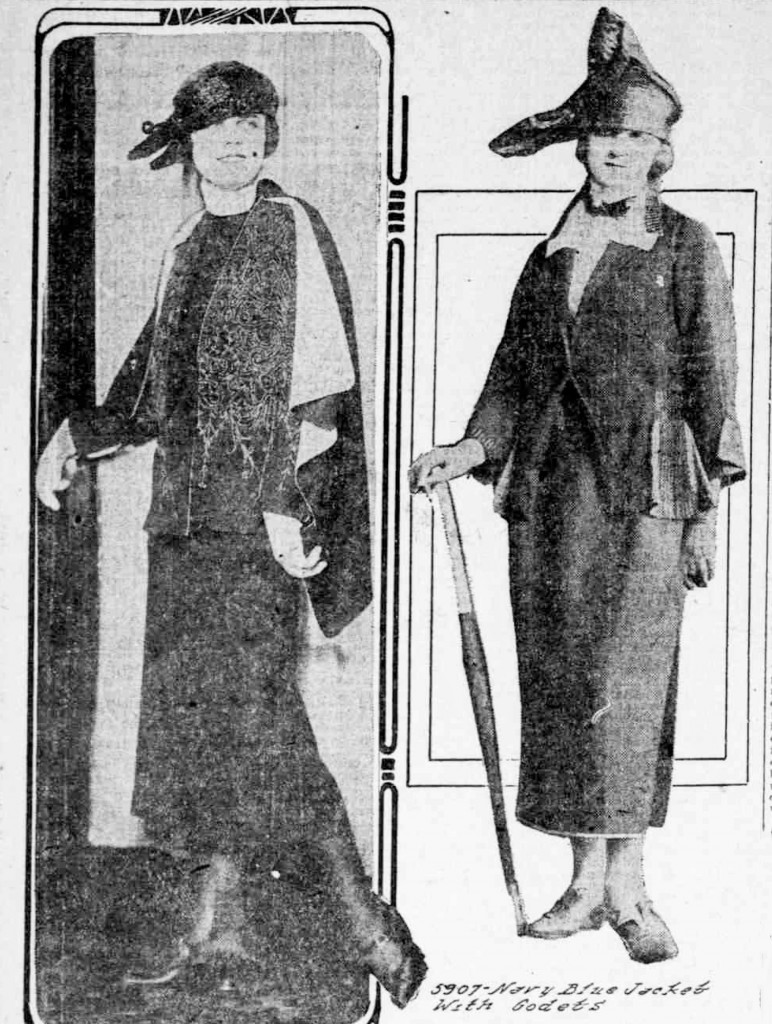
The Sunday Oregonian. (Portland, Ore.) February 27, 1921, Image 68. http://oregonnews.uoregon.edu/lccn/sn83045782/1921-02-27/ed-1/seq-68/
In a February 27, 1921, pictorial, the Sunday Oregonian shifted its attention to women’s “Spring Street Suits Just from Paris.” The newspaper observed “these saucy little suits,” by French designers Drecoll, Bernard, Lanvin, and Jenny, have jackets that are “short and jaunty and coat fronts show vests of embroidered linen.” About the street suits shown in the image above, the Sunday Oregonian stated the Lanvin model on the left “is of black serge with a lining of white cashmere in the jacket and cape… The cape is detachable and may be left off on a warm day.” On the right is a street suit by Jenny, its “short, loose jacket part of a navy blue serge suit, is slashed below the waistline and in the slashes are godets of old rose poplin embroidered with navy blue silk. The silk embroidered rose poplin is also introduced in bands on collar and sleeve and in a yoke at the top of the skirt.” “Flashy hats” further accentuated these spring looks.
Within the pages of historic Oregon newspapers from 1921, modern looks in men’s spring fashion were likelier to appear in advertisements, rather than in pictorials or feature-length articles. Common were advertisements such as this one (seen below) by Pendleton, Oregon-based retailer Alexanders, which ran in the April 14, 1921, issue of the East Oregonian.
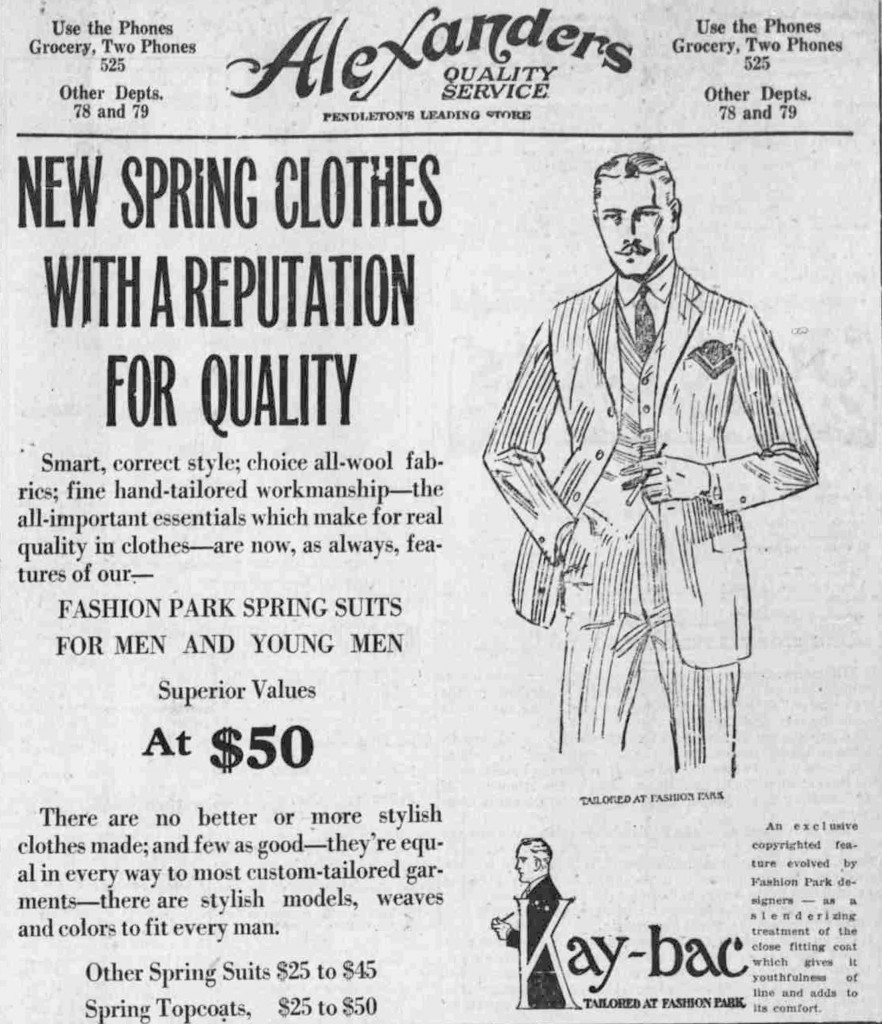
East Oregonian : E.O. (Pendleton, Umatilla Co., Or.) April 14, 1921, Image 3. http://oregonnews.uoregon.edu/lccn/sn88086023/1921-04-14/ed-1/seq-3/
Instead of photographs of models wearing trendy attire, crisp line drawings illustrated the new spring fashions for men. The emphasis was on “reputation” and “quality.” “Hand-tailored workmanship” and “superior values” were touted. However, for men as well as women, the appeal of thinness and youth was deftly used to market the new styles. In smaller print, in the lower right-hand corner of the Alexanders print ad, the newspaper’s male readership was assured of the “slenderizing treatment of the close fitting coat which gives it youthfulness of line.” As early as 1921, thin was “in,” as was the desirability of youthfulness. This is decades before the rise of Twiggy and the “Youthquake” movement in the mid-century fashion world!
Although men’s fashions were likelier to be seen in advertisements than in pictorials or feature-length articles in historic Oregon newspapers published in 1921, there’s still the occasional news article that informed fashion-forward readers of fresh developments in men’s style. Two examples of such news articles spotlighting men’s fashion were published in the March 19, 1921, issue of the East Oregonian. Shown below, the articles “New Color Jones Offered in Spring Haberdashery” and “Simplicity Marks Spring Hats for Men” were penned by Otto A. Engel and Milton Conhaim, respectively. Both articles largely focused on hat trends for men, but in his article Engel went even further, reporting in great depth on the latest in shirts and neckwear. Declaring “smaller stripes this year,” “fiber silk shirts improve,” and “Scotch madras popular,” Engel gave East Oregonian readers the real scoop on what was current in men’s spring fashion. In his frank manner, he even noted, “There’s nothing really new in the pajama line,” and “No radical changes mark underwear, belts, jewelry, handkerchiefs and walking sticks.”
If you’ve ever wondered what the women and men of Oregon wore as winter turned into spring in the year 1921, look no further than historic Oregon newspapers. Through pictorials, articles, and advertisements, the spring fashions of 1921 were on full display. See for yourself today!

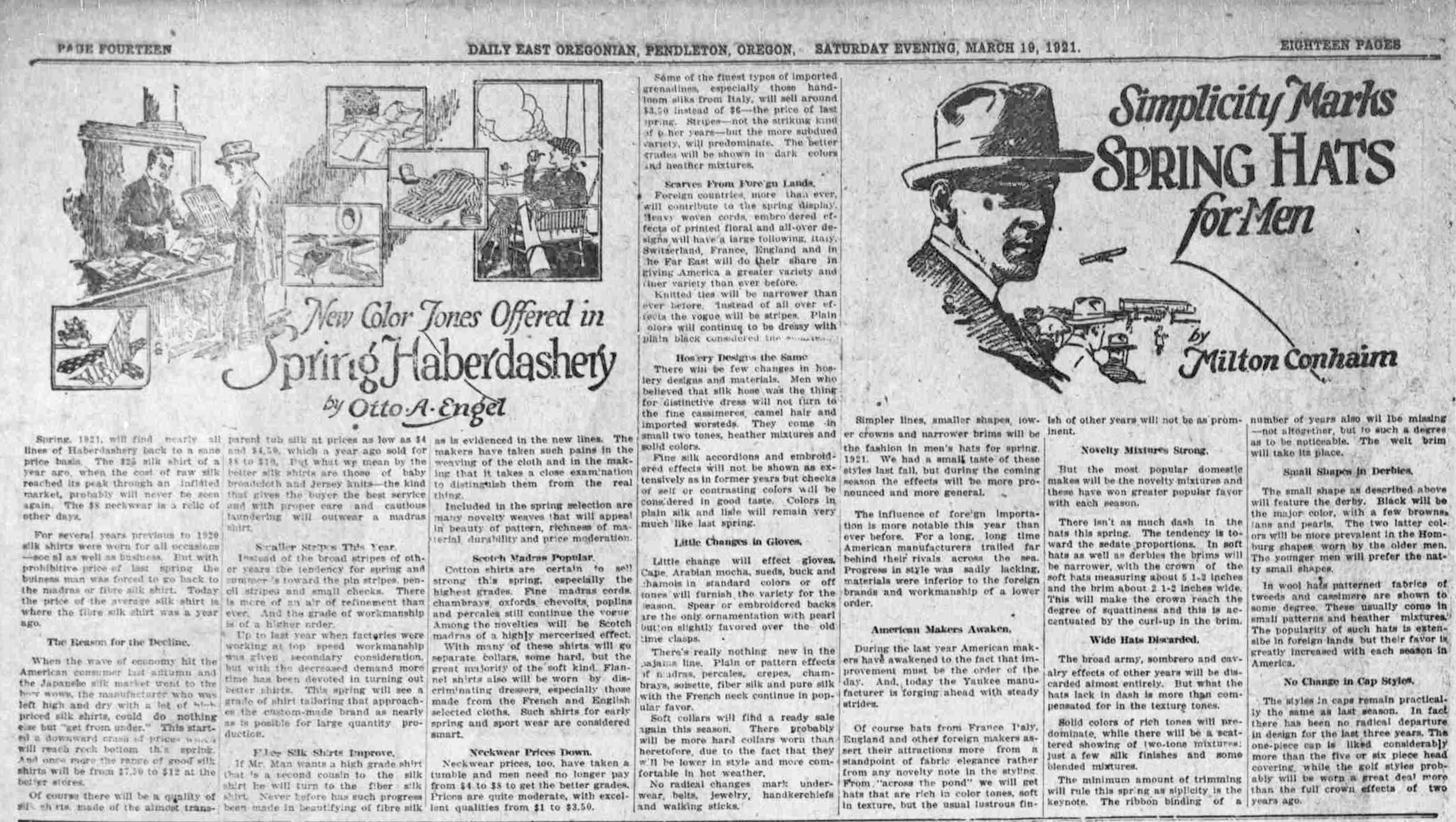
Leave a Reply